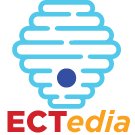Reflection Principle
Overview
The educational reformer John Dewey referred to reflective thought as, “Active, persistent, and careful consideration of any belief or supposed form of knowledge in the light of the grounds that support it, and the further conclusions to which it tends” (1932). The benefits of reflection pointed out by Dewey, has paved the way for educational psychologists like Roxana Moreno and Richard Mayer (2010) to consider reflection as a principle that could promote generative processing ( CTML Generative Processing Assumption). There are several types of methods of reflection. For instance, Elaborative Interrogation is a type of reflective process where students are prompted to answer “why” questions about material they had just read (Moreno et a., 2001; Seifert, 1993). Another type of reflective process, Self-Explanations, involves prompting learners to explain their answers to problems while they learn (Chi, de Leeuwenhoek, Chou & La Vancher, 1994). One important idea of the reflection principle is that learners who interact with multimedia environments intended to utilize the Feedback and Guided-Learning principles will vary in their generation of deep learning based on how they manage their cognitive resources through reflecting on their actions and feedback (Moreno & Mayer, 2010). In addition, the reflection principle predicts that forms of instruction that encourage students to reflect on correct solutions will likely lead to more meaningful learning than non-interactive forms of instruction that do not promote reflection.
